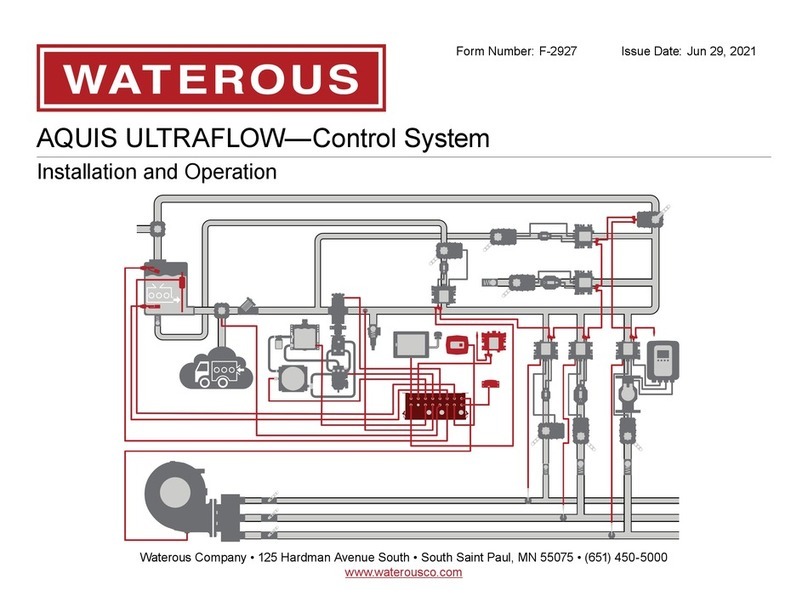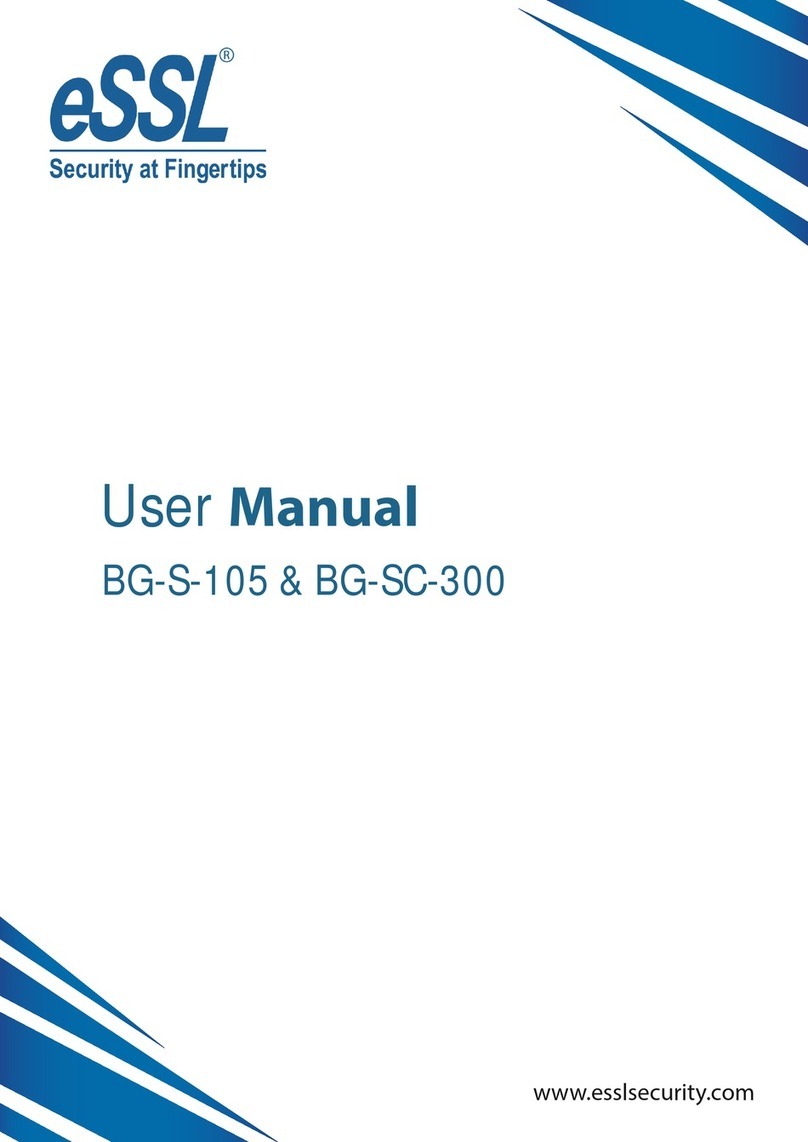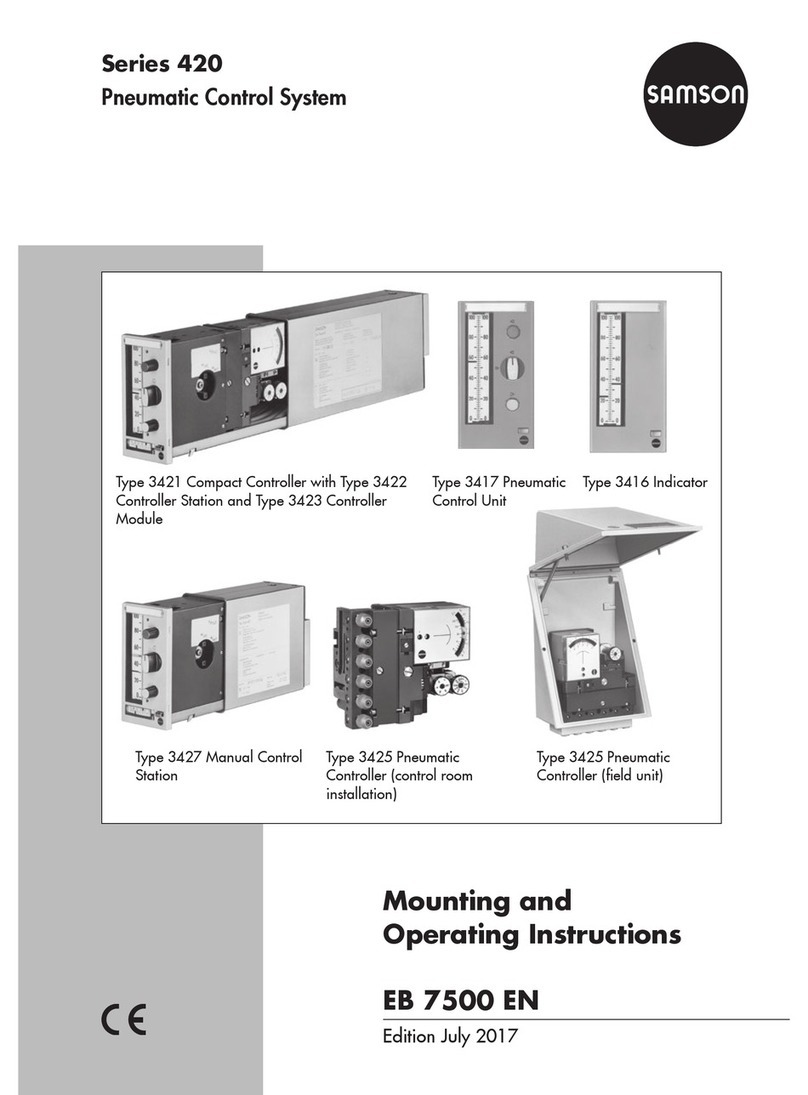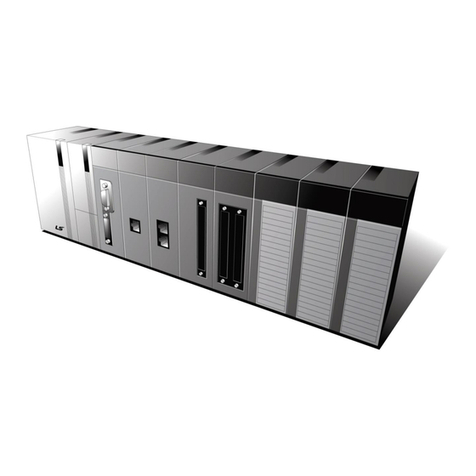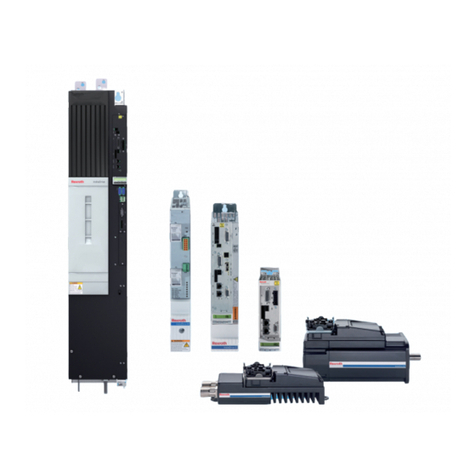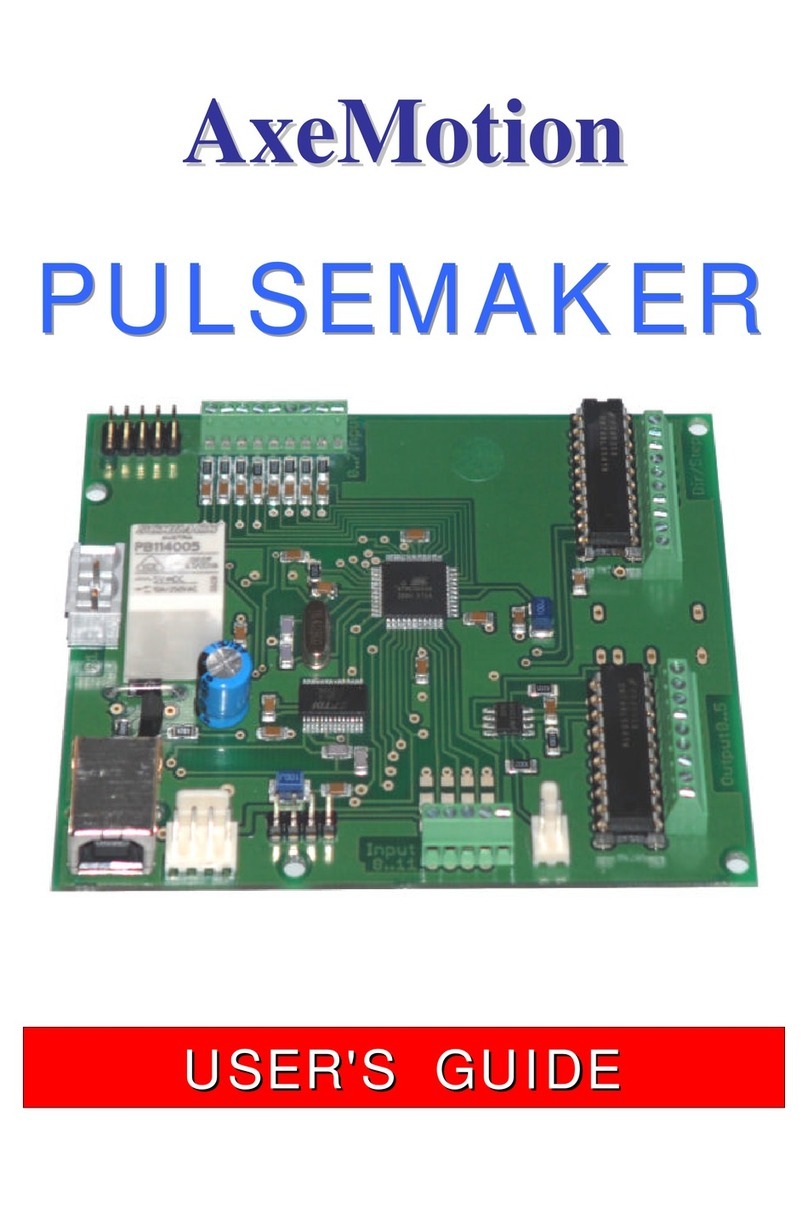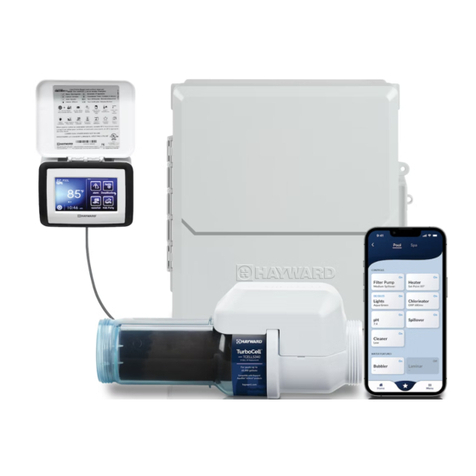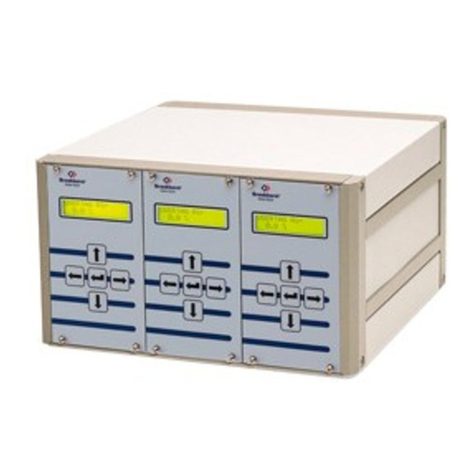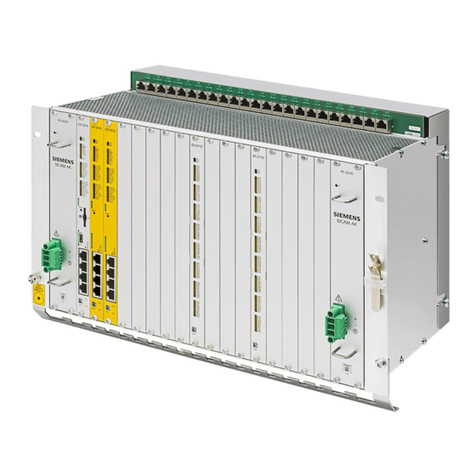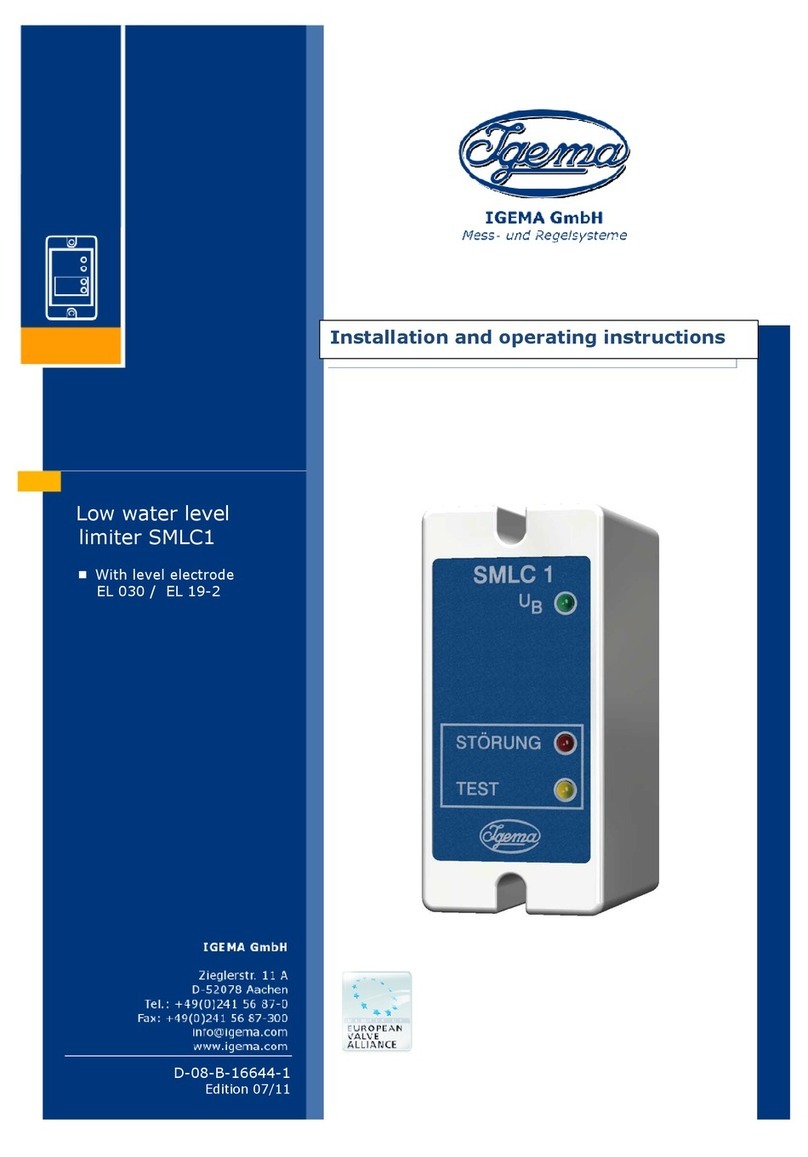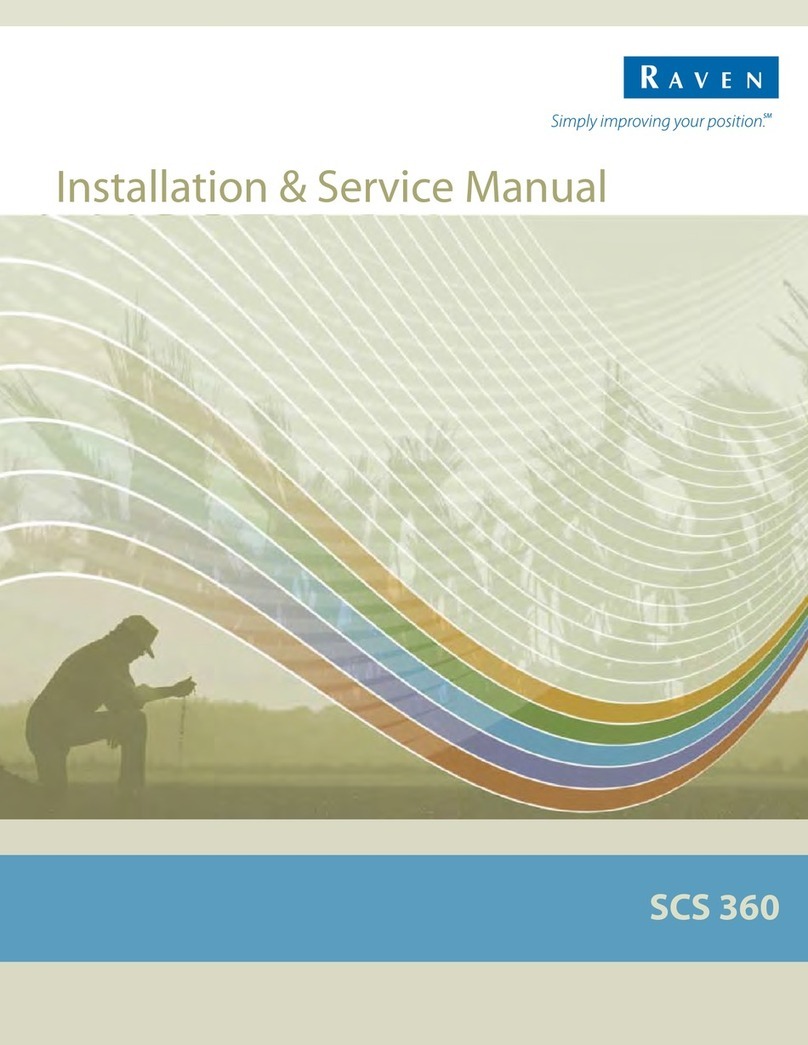Waterous Aquis 2.5 SSP Installation instructions

5/17/2011
Foam Control
Installation & Operation
Instructions
Aquis 2.5 SSP
Rev 3
Unit Serial Number ______________________
Waterous, Arizona Operations
7612 North 74th Ave.
Glendale, Arizona 85303
623-979-3398
Fax: 623-979-6949
www.waterousco.com

Waterous, Arizona Operations Aquis 2.5 SSP Installation & Operation Rev 3
Page 2 of 30
Warnings, Cautions, and Notes
Warning:
A warning alerts you to a procedure, practice or condition that may result in death or long
term injury to personnel or destruction of equipment.
Caution:
A caution alerts you to a procedure or condition that may result in serious
damage to equipment or its failure to operate as expected
Note: A note points out important information. Failure to read the note may not result in
physical harm to personnel or equipment. It may waste time and money.
Revision History
Revision
Date Issued
Comments
-
11/03/09
Initial Release
Added F5, F6 to the Calibration section & priming
mode (in operations), updated fig 5 & fig 6
1
7/22/10
Added Foam Cert
2
8/6/10
Added Pump Maintenance
3
5/9/11
Added Flow Tee drawing
Disclaimer: These instructions are guidelines only and in no way meant to be definitive. During installation, standard safety
precautions and equipment should be used where appropriate. Because the tools used and the skill/experience of
the installer can vary widely, it is impossible to anticipate all conditions under which this installation is made, or to
provide cautions for all possible hazards. Proper installation is the responsibility of the purchaser. All bolts,
setscrews, and belts must be checked prior to start-up AND after the initial operation. Damages due to poor
installation are the responsibility of the installer.
Waterous reserves the right to make modifications to the system without notice

Waterous, Arizona Operations Aquis 2.5 SSP Installation & Operation Rev 3
Page 3 of 30
Table of Contents
SECTION 1. SAFETY, Everyone’s Concern..........................................................................................4
SECTION 2. INSTALLATION PLANNING.............................................................................................5
SECTION 3. PLUMBING COMPONENTS.............................................................................................7
A. Motor / Pump Assembly....................................................................................................................7
I. Power Supply................................................................................................................................8
II. Motor / Pump / Controller..............................................................................................................9
III. Pump Maintenance.....................................................................................................................10
B. Wye Strainer....................................................................................................................................10
C. Flow Sensor ....................................................................................................................................10
D. Flow Tee..........................................................................................................................................11
E. Foam Injection Check Valve...........................................................................................................12
F. Drain Lines......................................................................................................................................12
G. Flushing System..............................................................................................................................12
H. Inject/Bypass Valve.........................................................................................................................13
SECTION 4. ELECTRICAL COMPONETS..........................................................................................14
A. Operator Interface Terminal (OIT)...................................................................................................15
B. Flow Sensor ....................................................................................................................................16
C. Cables.............................................................................................................................................16
SECTION 5. CALIBRATION AND SETUP...........................................................................................17
A. Entering Calibration Mode...............................................................................................................17
B. F1 - Default Mix Percentage ...........................................................................................................17
C. F2 –Units of Measurement.............................................................................................................17
D. F3 –Flow Rate Calibration..............................................................................................................18
E. F4 –System Lockout .......................................................................................................................18
F. F5 –Foam Select............................................................................................................................18
G. F6 –Simulated Water Flow (per NFPA testing)..............................................................................19
H. Saving Calibration...........................................................................................................................19
SECTION 6. OPERATION...................................................................................................................20
A. Operating the System .....................................................................................................................20
SECTION 7. DRAWINGS.....................................................................................................................25
SECTION 8. PART LIST......................................................................................................................29
SECTION 9. CONDITIONAL 1-YEAR WARRANTY POLICY..............................................................30
Figure(s)
Figure 1 AQUIS 2.5 SSP Motor / Pump assembly ......................................................................................7
Figure 2 Terminal block locations................................................................................................................9
Figure 3 Small Terminal Block......................................................................................................................9
Figure 4 Paddle-wheel Tee........................................................................................................................11
Figure 5 Foam Injection Check Valve.........................................................................................................12
Figure 6 Flow sensor..................................................................................................................................16
Figure 7 Basic System Schematic.............................................................................................................25
Figure 8 OIT (Display) Panel Cutout..........................................................................................................26
Figure 9 Aquis SSP Z Bracket Mount Bolt Pattern....................................................................................27
Figure 10 Aquis Flow Tees........................................................................................................................28

Waterous, Arizona Operations Aquis 2.5 SSP Installation & Operation Rev 3
Page 4 of 30
SECTION 1. SAFETY, Everyone’s Concern
Please read all of the following safety precautions and follow carefully. They are important to
the prevention of personal injury or damage to the equipment.
1. Do not pump at pressures higher than the maximum recommended pressure. [400 psi
(28 BAR)]
2. Do not permanently remove or alter any guarding devices or attempt to operate the
system when these guards are temporarily removed.
3. Always disconnect the power source before attempting to service any part of the pump.
4. Release all pressure within the system before servicing any of its components.
5. Drain all concentrate and water from the discharge system before servicing any of its
component parts.
6. Check all hoses for weak or worn conditions on a regular basis. Ensure that all
connections and fittings are tight and secure.
7. Use only pipe, hose, and fittings from the foam pump outlet to the injector fitting, which
are rated at or above the maximum pressure [400 psi (28 BAR) minimum] rating at which
the water pump system operates.
8. Any electrical system has the potential to cause sparks during service. Take care to
eliminate explosive or hazardous environments during service/repair.
Caution:
Do not attempt to operate the system at or above a temperature of 160°F (71°C)
Ensure that the electrical source of power for the unit is the appropriate 12 or 24
volt, negative ground DC system, with a minimum current rating of at least 60
amps for 12 VDC or 30 amps for 24 VDC System.
Periodically inspect the pump and the system components. Perform routine
preventive maintenance as required. Failure to perform routine maintenance may
cause damage to the pump.
Read and understand ―Operation‖ section before attempting to operate the unit.
Always disconnect the ground straps and control cables from the control module or
other Aquis equipment before electric arc welding at any point on the apparatus.
Failure to do so will result in a power surge through the unit that could cause
irreparable damage to the system components.
The cables shipped with each Aquis unit are tested at the factory. Improper
handling and forcing connections can damage these cables which could result in
other system damage.

Waterous, Arizona Operations Aquis 2.5 SSP Installation & Operation Rev 3
Page 5 of 30
This document explains how to set up and operate the Aquis Foam Control system.
SECTION 2. INSTALLATION PLANNING
The Waterous recommends that you spend time planning where and how you intend to install this
unit in the equipment before beginning the actual installation.
Determine the locations of the components to be installed such as; foam tank, Motor / Pump
Assembly, Manifold and OIT.
Locate the pump as close to the supply source as possible. Install it in a clean space
where it will be easy to inspect and maintain. Allow room for checking the oil level,
changing the oil, and general servicing.
•Try to place components in locations that require the least amount of cables, hoses and
fittings.
•Position the Motor / Pump Assembly in an area that is protected from road debris and
excessive heat buildup.
•It is recommended that the Motor / Pump Assembly be installed in an accessible
compartment located in the vicinity of the Operator Interface Terminal (OIT) panel.
•Place the foam tank so that the refilling can be done safely.
•Most water tank manufacturers will build the foam tank into the booster tank.
•When specifying a integral foam tank, make sure provisions are made for installation of
the optional low tank level sensor as well as foam suction connections and tank drainage
according to NFPA.
Determine a location for the Operator Interface Terminal (OIT) on the operator panel of the
equipment. Refer to Fig 8 for cutout.
•Consider the routing path of the cable from the Operator Interface Terminal (OIT) to the
Pump / Motor Driver Assembly.
•If necessary, order extension cables to suit the location demands.
Warning:
Never attempt to cut or lengthen the molded cables. Cables can be daisy chained to obtain
longer lengths.
Always disconnect the ground straps and control cables from the Operator Interface
Terminal (OIT) or other Aquis equipment ―before”electric arc welding at any point on the
apparatus. Failure to do so could result in a power surge through the unit that could cause
irreparable damage to the electronic components.

Waterous, Arizona Operations Aquis 2.5 SSP Installation & Operation Rev 3
Page 6 of 30
Cautions:
Ensure Adequate Concentrate Supply.
Aquis 2.5 - a minimum of ¾ inch ID tubing
Safety Guards.
Follow all codes and regulations regarding installation and operation of the
Aquis system.
Shut-Off Valves.
Never install shut-off valves between the pump and discharge pressure
regulator, or in the regulator bypass line.
Electrical Mount
Assembly
OIT/Display and
Instruction Plate

Waterous, Arizona Operations Aquis 2.5 SSP Installation & Operation Rev 3
Page 7 of 30
SECTION 3. PLUMBING COMPONENTS
A. Motor / Pump Assembly
The Motor / Pump Assembly must be mounted horizontally. The base must be anchored to a
surface or structure that is rigid and of adequate strength to withstand the vibration and
stresses of apparatus operation.
Flexible hose is required to make the hose connections from the Motor / Pump Assembly to
the foam tank.
DO NOT hard pipe the system.
Consider access requirements for checking the foam pump. Be sure the foam concentrate
hoses can be properly routed to the inlets and outlets on the foam pump.
Foam concentrates should gravity feed to the foam pump inlet from the foam tank. However
the systems are capable of drafting up to 1 meter vertically. The Motor / Pump Assembly
must be mounted in an area to avoid excessive exhaust system heat buildup.
Protect the hoses and wiring to prevent chafing and abrasion during operation of the foam
system.
Protect the Motor / Pump Assembly from excessive road spray and debris. Although the
system is sealed and designed to be resistant to the harsh environment of fire fighting
apparatus, a protected compartment with easy operator access is the recommended
installation location.
Figure 1 AQUIS 2.5 SSP Motor / Pump assembly

Waterous, Arizona Operations Aquis 2.5 SSP Installation & Operation Rev 3
Page 8 of 30
The large circuit breaker (Figure 2) is used to connect the 12 VDC input power.
Make sure you provide adequate electrical power (60 amps minimum for 12 VDC or
30 amps for 24 VDC) from the battery. Use 8 AWG (minimum) wire directly to the
battery or battery switch. Long wire runs may require 6 or 4 AWG wire for proper
operation.
Recommended wire sizes
Wire Size
Wire Length (approx.)
8 awg
10-20 feet
6 awg
20 feet to 30 feet
4 awg
30 feet or more
I. Power Supply
Electrical devices can be easily damaged by a weak or erratic power supply. The
better the power supply, the better the Aquis system will perform. At maximum
output, the Aquis system can draw 60 amps at 12 VDC or 30 amps at 24 VDC.
Connect the ground lead from the chassis frame or the negative battery terminal. Use
the same size wire as the power lead.
DO NOT connect the main power leads to small leads that are supplying some other
device such as a light bar or siren.
CAUTION:
Be careful not to damage or short circuit the wires leading to the circuit
breaker. Only the Aquis system is protected by the circuit breaker.

Waterous, Arizona Operations Aquis 2.5 SSP Installation & Operation Rev 3
Page 9 of 30
II. Motor / Pump / Controller
Figure 2 Terminal block locations
There are no user serviceable parts inside the Control Box. All power and ground
cables will come with the new box
Figure 3 Small Terminal Block
Circuit Breaker
to connect the incoming
DC power to
Sensor Inputs / Outputs
From the Flow Sensor, Product
Sensor and OIT
Small Terminal Block
to connect the Tank Select
Switch Input
Control Box
Green/Gray
Brown
Blue
Common
Tank A Float Switch
Auto Run
see pg 21 for details
GROUND STUD
+ 12 or 24 VDC

Waterous, Arizona Operations Aquis 2.5 SSP Installation & Operation Rev 3
Page 10 of 30
III. Pump Maintenance
Daily
Check the oil level and the condition of the oil. The oil level should be 3/4 in. (20 mm)
from the top of the fill port.
Use the appropriate pump oil or equivalent, motor oil for the application (SAE
10W/30).
Manufacturer’s recommendations
OPERATION
Every
8 hours
Every
50 hours
Every
500 hours
Check oil level
X
Check tubes-fittings
X
Check & clean inlet filter
X
Control pump connection to the
engine
X
Change oil
X –First change
X
Check suction/delivery valves
X
Check pump bolt and nut setting
X
Check regulation valve
X
Periodically
Change the oil after the first 50 hours of operation, and every 500 operating hours
thereafter. When changing, remove the drain plug at the bottom of the pump so all oil
and accumulated sediment will drain out.
Check the inlet pressure or vacuum periodically with a gauge.
Caution:
DO NOT turn the drive shaft while the oil reservoir is empty.
Protect the pump from freezing.
B. Wye Strainer
The line strainer provided with the unit has 3/4 inch NPT female threaded ports will need to
be installed, in-line, between the foam supply tank and the foam pump. The hose from the
foam tank should have adequate wall stiffness to withstand the vacuum of the foam pump
while it is operating.
NOTE: If a pressurized water flush from one of the discharges is incorporated, the plumbing
and line strainer exposed to this pressure must be rated at or above the operating
pressure of all other discharge plumbing components.
C. Flow Sensor
The flow sensor (paddle-wheel) measures the water flow through the foam manifold system
and sends the information to the Control Box and OIT Display. (Figure 6)

Waterous, Arizona Operations Aquis 2.5 SSP Installation & Operation Rev 3
Page 11 of 30
The flow sensor requires that the amount of turbulence be as low as possible. Excessive
turbulence produces unstable and inaccurate flow readings. The following installation
guidelines will help attain the best readings and maintain accuracy of the displayed value.
a. The standard and minimum of 5 X the pipe diameter of straight run pipe without any
fittings is preferred upstream of the flow sensor. 10 times is even better —the longer
the straight run, the lower the turbulence.
b. The downstream plumbing of the flow sensor is not critical; but again, straight runs
without fittings help maintain accurate flow readings.
d. Last, try to mount the flow sensor in a position that is accessible for routine inspection
and maintenance.
D. Flow Tee
In horizontal runs, the Tee should be mounted upright.
Figure 4 Paddle-wheel Tee
Flow Sensor
Water Flow

Waterous, Arizona Operations Aquis 2.5 SSP Installation & Operation Rev 3
Page 12 of 30
Figure 5 Foam Injection Check Valve
E. Foam Injection Check Valve
A 3/8 inch check valve meets NFPA requirements for a non-return device in the foam
injection system.
DO NOT OVER TIGHTEN.
The check valve in the water way is required to keep foam solution out of the main pump and
allow pump priming without drawing foam into the piping.
F. Drain Lines
On apparatus with multiple drain lines, the drains from the foam solution discharge line
should not be piped into a multi drain system before the check valves. The standard multi
drain system from most manufacturers will allow cross talk between the drain lines and the
apparatus water tank, resulting in contamination of the water tank with foam. A separate drain
system should be provided for foam solution piping to prevent contamination of the water
tank and fire pump.
G. Flushing System
Depending on the corrosiveness of the foam concentrates to be used, a flushing system may
be required in the foam concentrate injection system. Most Class A foam concentrates are
less corrosive and therefore may not require flushing.
Note arrow direction

Waterous, Arizona Operations Aquis 2.5 SSP Installation & Operation Rev 3
Page 13 of 30
H. Inject/Bypass Valve
The Inject/Bypass valve is mounted on the discharge side of the foam pump. This valve shall
be accessible by the pump operator during normal operations. The valve is a 3-way
directional valve that selects where the output of the foam pump will go.
Check to make sure the valve is installed properly. Look at the ports as you move the handle,
the flow should go from the center port to each of the other ports.
The hose and fittings from the Inject port to the foam injector fitting should have minimum 3/8
inch inside diameter and be rated at 400 psi [28 BAR] minimum working pressure or
maximum discharge pressure of the fire pump.
The hose from the Bypass port may have a lower pressure rating since it is plumbed to the
atmosphere and will not receive high pressures. This hose is used for pumping the
concentrate into a container, to empty the tank or to assist in priming of the foam pump. The
hose from the Bypass port must be long enough to reach a container outside the truck. This
hose must be coiled for storage when not in use.

Waterous, Arizona Operations Aquis 2.5 SSP Installation & Operation Rev 3
Page 14 of 30
SECTION 4. ELECTRICAL COMPONETS
Warnings:
Complete molded cable sets are provided with each Aquis system to make all the
necessary connections and are integrated in the control box.
The cables and receptacles are keyed so they only go in the correct receptacle and they
can only go in one way.
DO NOT FORCE MISMATCHED CABLE CONNECTIONS. The system can only perform
when the electrical connections are sound, so make sure each one is right.
DO NOT hook up the main power cables until all of the connections are made to each of
the electrical components. The last connection should be the power cable to the foam
pump/motor base assembly.
DO NOT cut molded cables.
Make sure you provide at least 60 amps of electrical power for 12 VDC systems or 30
amps for 24 VDC systems from the battery to the main power terminal. Use 8 AWG
(minimum) wire directly to the battery or battery switch.
This system is designed for 12 or 24 volt negative ground direct current systems only.
Use care when installing molded cables. Count pins before connecting. Bent pins caused
by improper hookup can prevent proper operation even when cables are reattached
properly.
If the cable connection seal washer is missing or damaged, water can enter the
connector and cause corrosion of the pins and terminals that will cause system failure.
The cables shipped with each Aquis unit are tested at the factory with that unit. Improper
handling and forcing connections can damage these cables which could result in other
system damage.
Always disconnect the ground straps and control cables from the Operator Interface
Terminal (OIT) or other Aquis equipment “before”electric arc welding at any point on
the apparatus. Failure to do so may result in a power surge through the unit that could
cause irreparable damage to the system components.

Waterous, Arizona Operations Aquis 2.5 SSP Installation & Operation Rev 3
Page 15 of 30
A. Operator Interface Terminal (OIT)
Cables: 3 meter (standard)
The OIT (Display) is designed to be
mounted in the operator panel of the
apparatus. The cutout needed for the
OIT, in the operator panel, is Figure 8 in
back of this manual.
The OIT is secured with four
compression latches.
Note: Extension cables can be
daisy chained to obtain longer
lengths.
The display requires 5 inches [127
mm] minimum from the back of the
operator panel to clear cables and
connectors.
Once the OIT (Display) is mounted,
connect the OIT (Display) cable
from the motor driver box (on the
Pump / Motor Driver Assembly)
terminal to the 8 pin connector on
the back of the OIT (Display).
Make sure there is enough
clearance behind the OIT assembly
for the cables.
Once the OIT assembly is mounted,
connect the control cable (8 pin)
from the control box to the back of
the OIT assembly.
5‖
5‖

Waterous, Arizona Operations Aquis 2.5 SSP Installation & Operation Rev 3
Page 16 of 30
B. Flow Sensor
Cables: 3 meter (standard)
A molded cable is supplied, which
connects from the Flow sensor to the
Control box of the Pump / Motor
Driver Assembly.
The sensor has a built in temperature
sensor.
Note: Extension cables can be daisy
chained to obtain longer
lengths.
Figure 6 Flow sensor
C. Cables
Making round coils of extra OIT and Flow sensor cables in the pump compartment can act as
an antenna. While the Flow sensor and OIT cables cannot be shortened, various lengths of
cable are available to minimize the "extra" cable in the truck.
When routing the cables, take care to avoid routing them next to antenna cables, radio power
lines and radio components. When there is extra cable, double the cable back on itself and
secure in a flat bundle with plastic wire ties instead of making a round coil.

Waterous, Arizona Operations Aquis 2.5 SSP Installation & Operation Rev 3
Page 17 of 30
SECTION 5. CALIBRATION AND SETUP
The Aquis system is able to be field calibrated using the control function buttons.
Only units of measure, water flow and the foam percentage default can be field set.
A. Entering Calibration Mode
1. Entering calibration is accomplished by using the control unit function buttons.
2. To enter this function press and hold the SELECT button for minimum of 5 seconds.
The OIT will display ―5 SEC‖
3. Continue to hold the SELECT button.
4. Then while the SELECT button is depressed, push the UP & DOWN arrow buttons at the
same time. The display will show CAL for 2 seconds, and then display F1.
5. Use the UP Key to advance to the next parameter (F2, F3, F4).
6. Use the DOWN Key to back up to a previous parameter (F2, F1)
7. To edit a parameter, press the SELECT Key at the associated Fn Prompt.
B. F1 - Default Mix Percentage
1. At the F1 prompt, press the SELECT button.
2. Use the UP & DOWN arrow buttons to select the default FOAM %. The selections will be
.1%, .2%, .3%, .4%, .5%, .6%, .7%, .8%, .9%, 1.0%,.
3. When finished, press the SELECT button to save the displayed value.
C. F2 –Units of Measurement
The units of measurement must be selected prior to any calibration functions. Units of
measurement are U.S. Gallons, Imperial Gallons and Liters.
1. Push the SELECT button at the F2 Prompt. The display will show the current setting.
2. Use the UP & DOWN arrow buttons to select one of the following measurement units.
GAL will select U.S. Gallons.
IPL will select Imperial Gallons.
LTR will select Metric Liters.
3. Pushing the SELECT button will save the displayed selection.
This will allow for calibration of the water flow in the units of measurement selected.

Waterous, Arizona Operations Aquis 2.5 SSP Installation & Operation Rev 3
Page 18 of 30
D. F3 –Flow Rate Calibration
1. Press the SELECT button at the F3 prompt. The current measured flow rate will be
displayed. Establish a flow using an accurate flow measuring device.
2. Once this is established, press the UP or DOWN buttons to advance to the calibration
step.
If the displayed flow rate is correct, press the SELECT button to return back to the F3
prompt.
If there is insufficient flow the display will show LoFL for 2 seconds, the return back to the
F3 prompt.
3. The display will now display 50 (starting value), or the last calibration value entered.
4. Use the UP & DOWN arrow buttons to change the displayed to value match the actual
flow rate according to the flow measuring device. If the button is only pressed
momentarily, the display to increment or decrement by 1. If the button is held, the display
will increment or decrement by 5.
5. Once the correct flow is achieved pushing the SELECT button will save the setting and
return to the F3 prompt.
E. F4 –System Lockout
System can be locked out after calibration and setup to avoid accidental changing.
1. Press the SELECT button at the F4 prompt and ―EnAb‖(enabled) will be displayed.
2. Pressing the UPbutton will toggle between ―LoC‖ (locked) and ―EnAb‖(enabled).
Settings will not be permanent until the calibration settings are saved.
3. Press the SELECT button and ―F4‖ will be displayed.
4. Pressing the FOAM button, saves the settings, locks the system and can not be
unlocked except at a qualified Waterous Service Center
F. F5 –Foam Select
a) Press the SELECT button at the F5 prompt
b) Pressing the ARROW or button will toggle between ―A-A, b-b, A-b‖
Running A Foam in both tanks, select A-A
Running B Foam in both tanks, select b-b
Running A Foam in one tank and B Foam in the other tank, select A-b
Warning:
A locked out system can only be unlocked at a qualified Waterous Service Center

Waterous, Arizona Operations Aquis 2.5 SSP Installation & Operation Rev 3
Page 19 of 30
G. F6 –Simulated Water Flow (per NFPA testing)
a) Press the SELECT button at the F6 prompt
b) Pressing the Arrow or button will toggle between ―0, 100, 200, 300‖ GPM
simulated flow rate.
c) Press SELECT.
d) Press the FOAM button to exit Calibration mode.
e) Displays the selected flow rate.
f) Place a hose from the BYPASS into a bucket.
g) Press FOAM, motor starts, foam pumps.
h) Run for 2 or 3 minutes to equalize output.
i) Measure the amount of concentrate in the bucket.
j) To get out of ―Simulated Water Flow‖, you must get out of Calibration mode and
come back to F6, setting water flow to Zero to get out of Simulated Water Flow mode.
H. Saving Calibration
To save all the calibration settings to flash memory, press the FOAM button while at the Fn
(n=1-6) prompt. The data will be stored, and the unit will return to normal operation.
Default Mix Percentage
Flow Rate
.1%
.2%
.3%
.4%
.5%
.6%
.7%
.8%
.9%
1.0%
100
.1
.2
.3
.4
.5
.6
.7
.8
.9
1.0
200
.2
.4
.6
.8
1.0
1.2
1.4
1.6
1.8
2.0
300
.3
.6
.9
1.2
1.5
1.8
2.1
2.4
2.7
3.0
U.S. Gallons

Waterous, Arizona Operations Aquis 2.5 SSP Installation & Operation Rev 3
Page 20 of 30
SECTION 6. OPERATION
A. Operating the System
Upon power up, the software revision number will be displayed. The unit will then display the
flow rate.
The software will perform a linear interpolation to determine values to use for flow rates that
are in between flow rates entered in the data array.
During normal operation, the OIT will display flow rate, percent mix, total water or total
product.
Table of contents
Other Waterous Control System manuals
Popular Control System manuals by other brands

Eneo
Eneo KBD-BVR-100 Installation and operating instructions
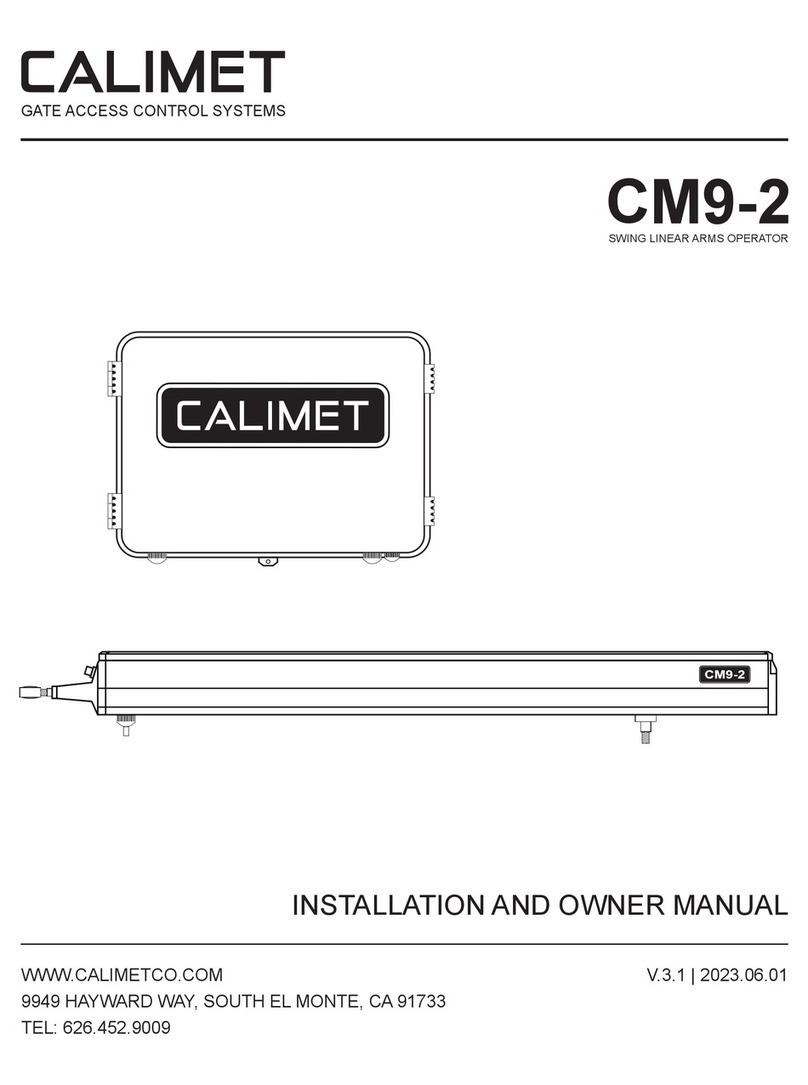
Calimet
Calimet CM9-2 Installation and owner's manual
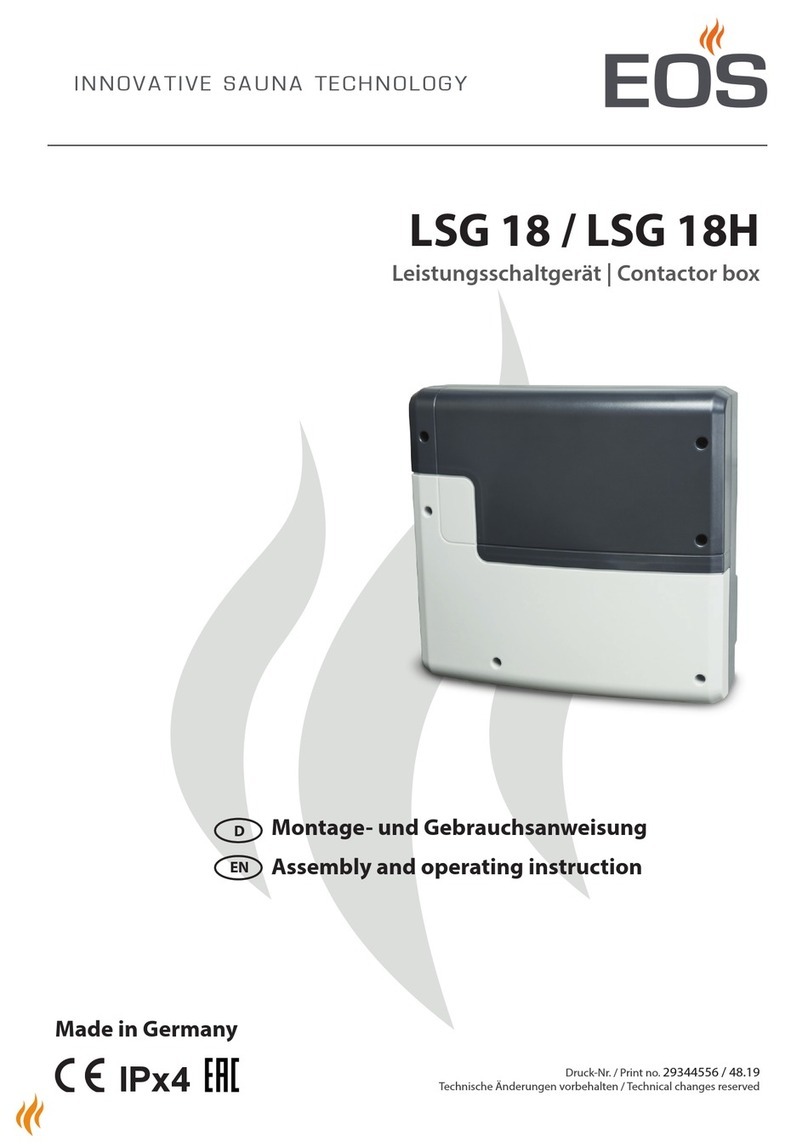
EOS
EOS LSG 18 Assembly and operating instruction

VIA Technologies
VIA Technologies ARTiGO A3000 quick start guide
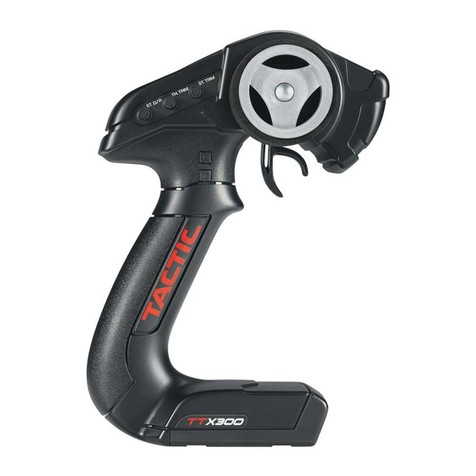
Tactic
Tactic TTX300 instruction manual
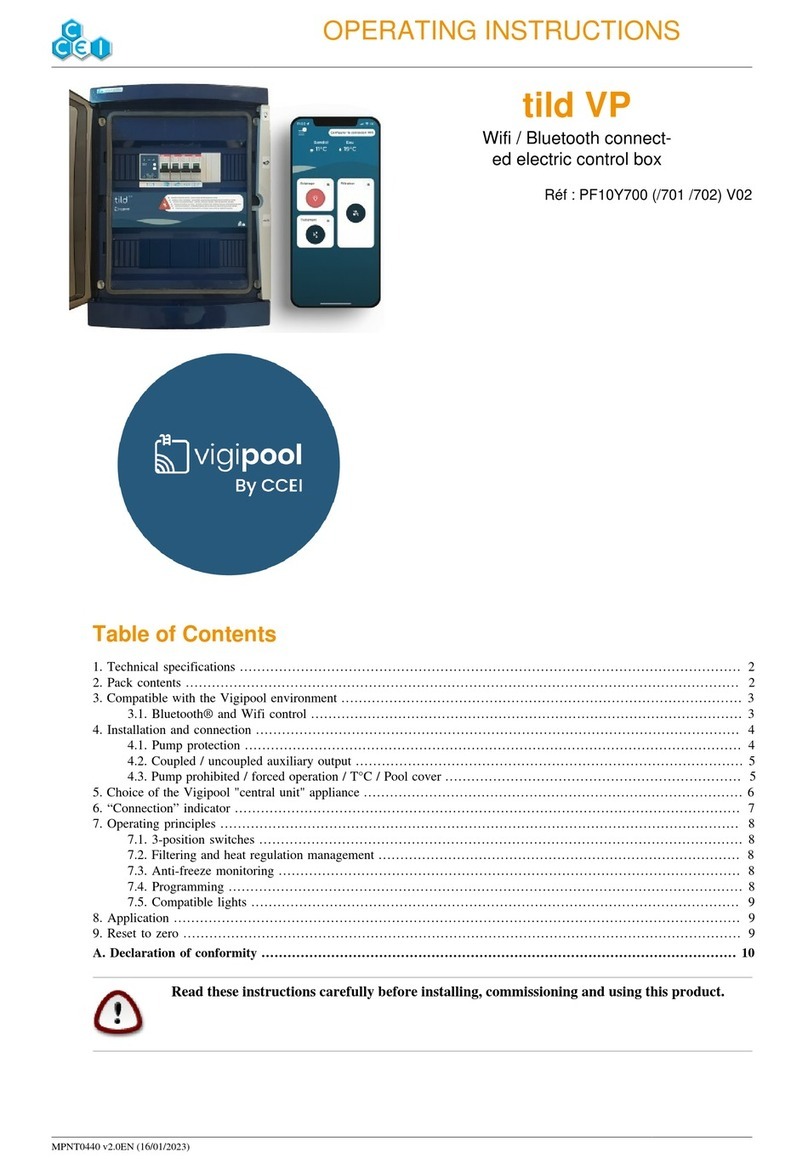
ccei
ccei tild VP operating instructions
